
|
Astronomy Picture Of the Day (APOD)
 NGC 1893 and the Tadpoles of IC 410
NGC 1893 and the Tadpoles of IC 410
1.02.2024
This cosmic view shows off an otherwise faint emission nebula IC 410, captured under clear Netherlands skies with telescope and narrowband filters. Above and right of center you can spot two remarkable inhabitants of the interstellar pond of gas and dust, known as the tadpoles of IC 410.
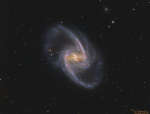 NGC 1365: Majestic Island Universe
NGC 1365: Majestic Island Universe
31.01.2024
Barred spiral galaxy NGC 1365 is truly a majestic island universe some 200,000 light-years across. Located a mere 60 million light-years away toward the faint but heated constellation Fornax, NGC 1365 is a dominant member of the well-studied Fornax Cluster of galaxies.
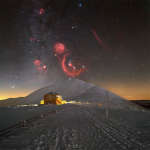 APOD: 2024 January 31 B Camera Orion Rising
APOD: 2024 January 31 B Camera Orion Rising
30.01.2024
What does Orion rising look like to a camera? During this time of the year, the famous constellation is visible to the southeast just after sunset. From most Earthly locations, Orion's familiar star pattern, highlighted by the three-stars-in-a-row belt stars, rises sideways.
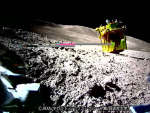 APOD: 2024 January 30 B SLIM Lands on the Moon
APOD: 2024 January 30 B SLIM Lands on the Moon
29.01.2024
New landers are on the Moon. Nearly two weeks ago, Japan's Smart Lander for Investigating Moon (SLIM) released two rovers as it descended, before its main lander touched down itself. The larger...
 APOD: 2024 January 29 B The Pleiades: Seven Dusty Sisters
APOD: 2024 January 29 B The Pleiades: Seven Dusty Sisters
28.01.2024
The well-known Pleiades star cluster is slowly destroying part of a passing cloud of gas and dust. The Pleiades is the brightest open cluster of stars on Earth's sky and can be seen from almost any northerly location with the unaided eye.
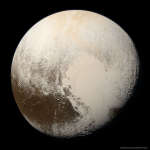 APOD: 2024 January 28 B Pluto in True Color
APOD: 2024 January 28 B Pluto in True Color
27.01.2024
What color is Pluto, really? It took some effort to figure out. Even given all of the images sent back to Earth when the robotic New Horizons spacecraft sped past Pluto in 2015, processing these multi-spectral frames to approximate what the human eye would see was challenging.
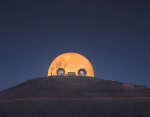 Full Observatory Moon
Full Observatory Moon
26.01.2024
A popular name for January's full moon in the northern hemisphere is the Full Wolf Moon. As the new year's first full moon, it rises over Las Campanas Observatory in this dramatic Earth-and-moonscape. Peering from the foreground like astronomical eyes are the observatory's twin 6.5 meter diameter Magellan telescopes.
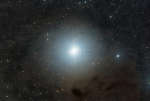 Epsilon Tauri: Star with Planet
Epsilon Tauri: Star with Planet
25.01.2024
Epsilon Tauri lies 146 light-years away. A K-type red giant star, epsilon Tau is cooler than the Sun, but with about 13 times the solar radius it has nearly 100 times the solar luminosity.
 Jyvcskylc in the Sky
Jyvcskylc in the Sky
24.01.2024
You might not immediately recognize this street map of a neighborhood in Jyvcskylc, Finland, planet Earth. But that's probably because the map was projected into the night sky and captured with an allsky camera on January 16. The temperature recorded on that northern winter night was around minus 20 degrees Celsius.
 APOD: 2024 January 24 B Earth and Moon from Beyond
APOD: 2024 January 24 B Earth and Moon from Beyond
23.01.2024
What do the Earth and Moon look like from beyond the Moon? Although frequently photographed together, the familiar duo was captured with this unusual perspective in late 2022 by the robotic Orion spacecraft of NASA's Artemis I mission as it looped around Earth's most massive satellite and looked back toward its home world.
|
January February March April May June |
|||||||||||||||||||||||||||||||||||||||||||||||||